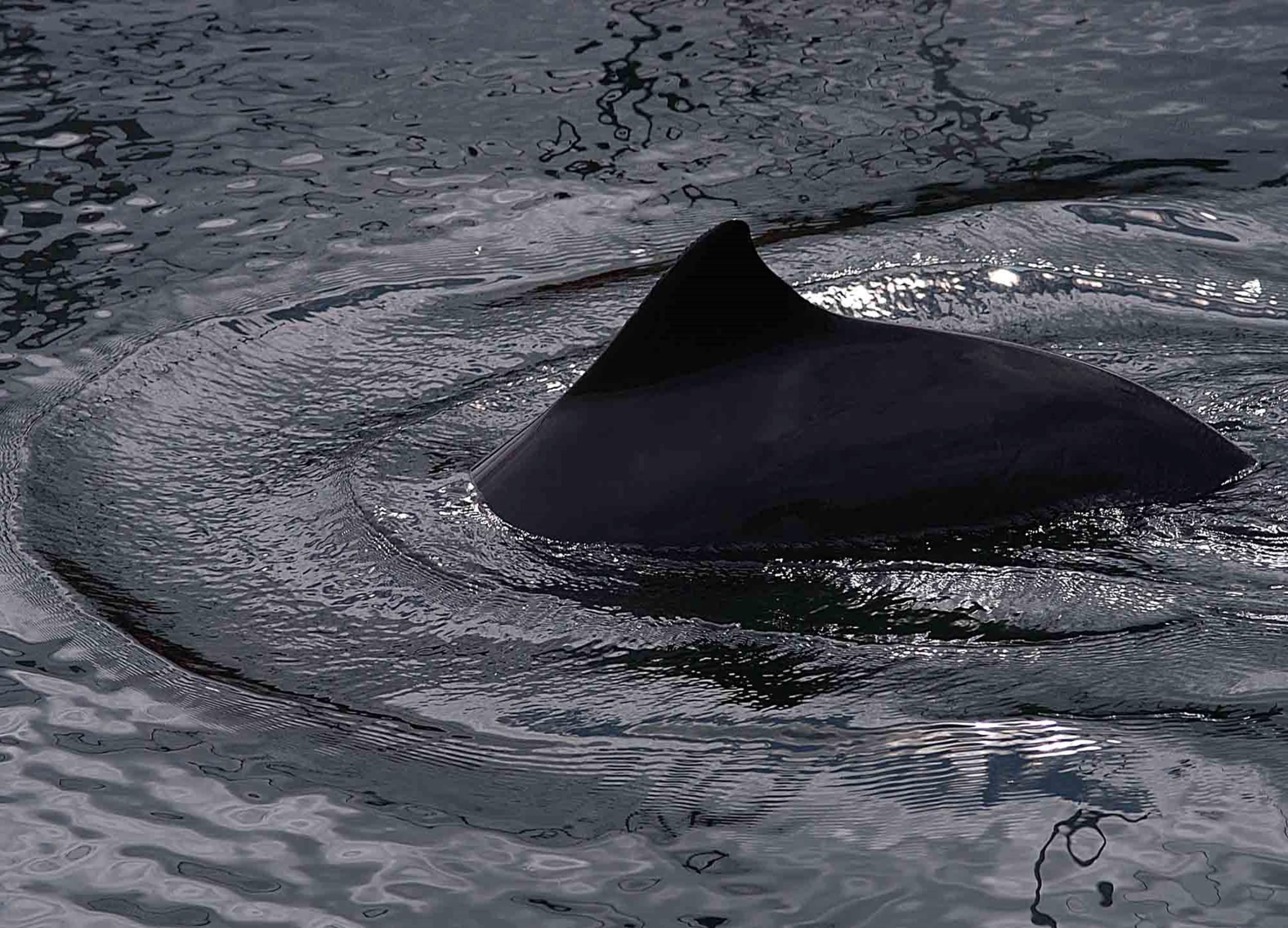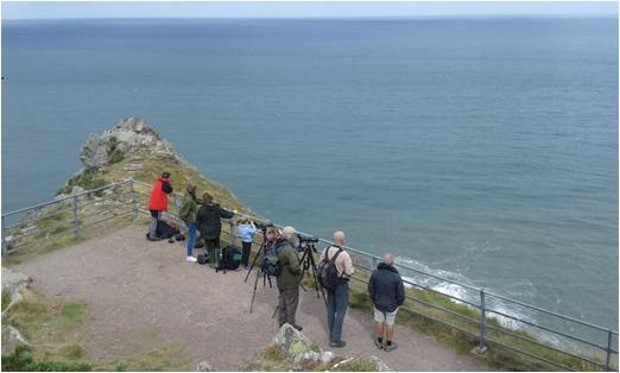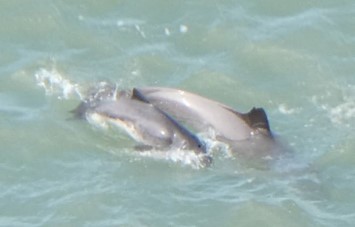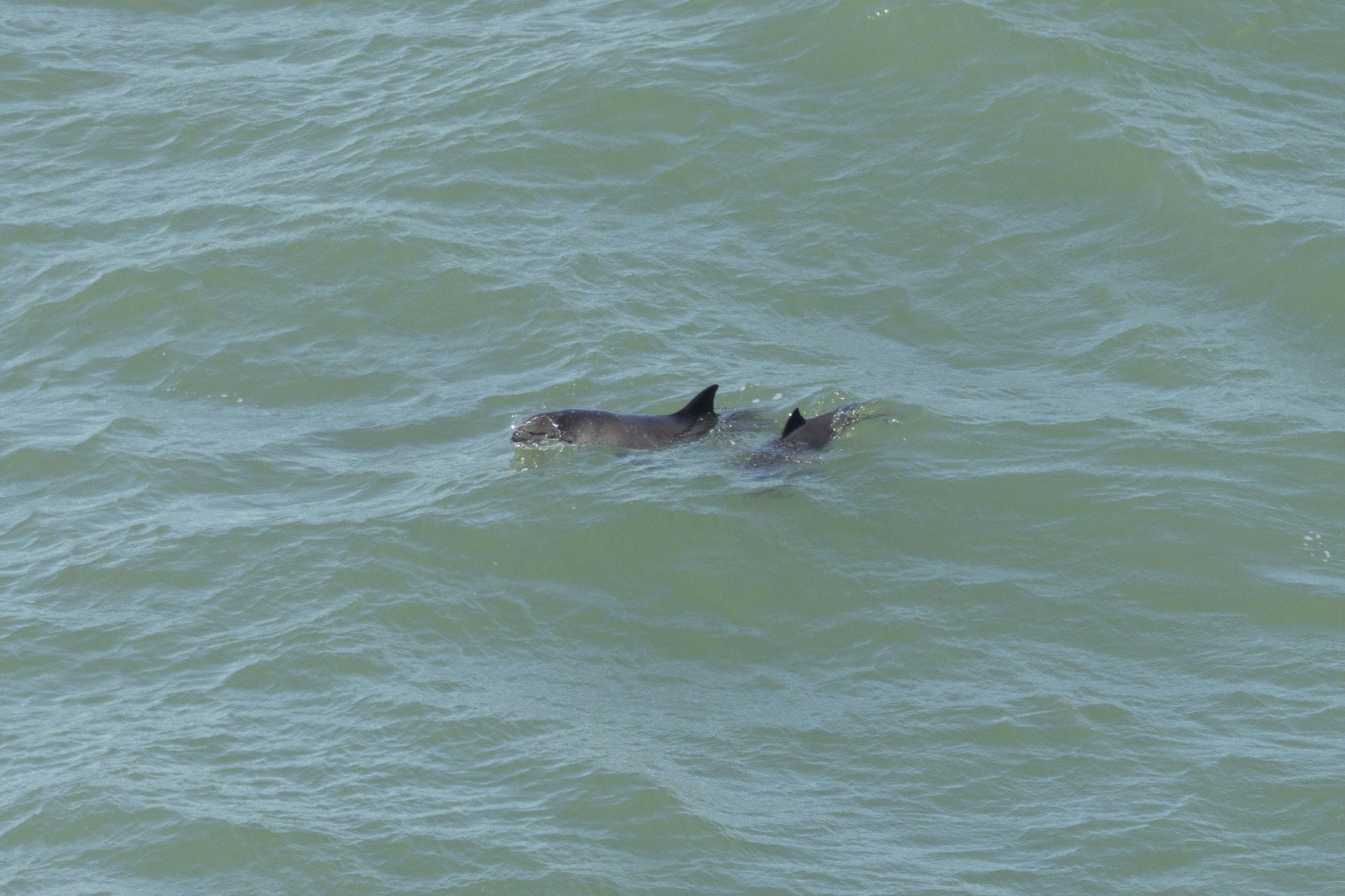Hurlstone Point Harbour Porpoise Monitoring Project (Somerset Sea Watch)
Harbour porpoises are relatively small compared to dolphins. They have rounded heads with no beak and can be identified when they surface by their small triangular dorsal fin. Harbour porpoises very rarely leap or jump out of the water and therefore you will often only get a brief glimpse of their dorsal fin and a small part of their back.
The highest number of sightings of harbour porpoise from both effort and casual sightings have been recorded from Hurlstone point, a headland within the Exmoor National Park, with occasional sightings throughout the year further into the Bristol Channel and Severn estuary.
Hurlstone point has been identified as an important feeding area and mother and calf pairs have been recorded consistently throughout the summer months. Unfortunately an increase in records of boat traffic and other water users has been highlighted along the Somerset coast since 2013. Some of these include the use of small, motorised vessels for sea angling, along with sail boats and recreational speed crafts such as jet skis, and ribs. Harbour porpoises use their acoustic capability to navigate in their underwater environment, and to locate and identify suitable prey which makes them highly susceptible to the effects of sound.
This has led to an ongoing dedicated harbour porpoise monitoring project at Hurlstone Point which Geckoella are proud to be supporting. This project uses effort surveys; where time spent observing is recorded, along with environmental, active vessel and marine mammal sightings data.
Photo-Identification (photo-ID) and mark-recapture methods are also being trialled following the identification of two harbour porpoises with distinctive markings on their dorsal fins during a Somerset Wildlife Trust monthly survey. A mother and calf pair were both recorded and photographed in July 2020 and again in July 2021 at Hurlstone Point.
Photo-ID can provide information on group structure, ranging patterns and site fidelity, as well as population size and a variety of life history parameters of cetaceans. The mark-recapture method makes use of naturally occurring, and sometimes human-induced, unique markings enabling identification of individual animals.
This monitoring project aims to gain further insights into the harbour porpoise population around Hurlstone Point, and the impacts of boat traffic on their behaviour.




